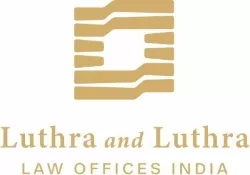- within Corporate/Commercial Law topic(s)
- in European Union
- in European Union
- in European Union
- in European Union
- in European Union
- with readers working within the Retail & Leisure and Law Firm industries
- within Corporate/Commercial Law, Insolvency/Bankruptcy/Re-Structuring and Insurance topic(s)
The landscape of corporate restructuring in India has undergone a significant transformation over the past two decades, marked by a shift from protracted judicial procedures to a more agile and responsive regulatory framework. Historically, Mergers and Acquisitions ("M&A") under the Companies Act, 1956, were characterised by cumbersome, court-driven processes; these factors often delayed vital business reorganisations and led to inefficiencies, unpredictability, and unviable transactions.
The advent of the Companies Act, 2013 ("Act"), and the setting up of the National Company Law Tribunal ("NCLT") were beneficial in the merger and amalgamation of certain companies1. However, despite these advancements, securing approvals continued to be an arduous journey, with timelines frequently spanning a year or longer. Such delays posed significant challenges to the dynamic and globally competitive aspirations of Indian businesses.
Recognising the need for a more agile framework, the Government of India introduced the concept of a Fast-Track Merger ("FTM") under the Act. In 2016, the FTM route offered a simplified alternative supervised by the Regional Director ("RD"), bypassing the NCLT for certain classes of companies.
Fulfilling the commitment made in the Union Budget 2025-26 to rationalise and simplify merger approvals, the Ministry of Corporate Affairs vide its notification dated September 4, 20252 amended the Companies (Compromises, Arrangements and Amalgamations) Rules, 2016 ("CAA Rules"), which is marked by sweeping regulatory reforms that aim to simplify procedures, accelerate timelines, and reduce the judicial burden on NCLT. This can be seen as a landmark regulatorydevelopment thathas rewrittenthe script for India Inc.
The Old Regime vs. The 2025 Amendments: A Comparative Analysis
These CAA Rules come against a backdrop of increasing demand for efficient and transparent deal-making, both in domestic and cross-border contexts. They respond to the evolving needs of corporates, investors, and creditors while seeking to align India's restructuring regime more closely with global best practices. Notably, the amendments are designed to strike a careful balance between facilitating business agility and safeguarding stakeholder interests.
The key changes introduced to Rule 25 of the CAA Rules are best understood through a direct comparison with the old provisions.
- Expanded Scope for Fast-Track Mergers
Prior to the amendment, the FTM route was restricted to mergers between:
- two or more small companies;
- a holding company and itswholly ownedsubsidiary;
- two or more start-up companies; and
- one or more start-up companies with one or more small companies.
However, the scope has now been expanded to also include mergers between:
- unlisted companies(not being not-for-profit companies under Section 8 of the Act), where each company has outstanding loans, debentures, or deposits not exceeding ₹ 200 crores and has no defaults in repayment. This requires a certificate from the company's auditor in the newly introducedform No. CAA-10A;
- holding company (listed or unlisted) and its subsidiary (listed or unlisted) provided the transferor company is unlisted. This, in turn, removes the "wholly owned subsidiary" restriction;
- fellow subsidiariesof the same holding company, provided the transferor company or companies are unlisted; and
- A foreign holding company and its Indian wholly owned subsidiary(a "reverse flip"), integrating the provisions of Rule 25A for clarity and ease.
- Inclusion of De-mergers and Divisions
Prior to the amendment, the FTM primarily referred to mergers and amalgamations. The applicability to de-mergers or divisions was not explicitly stated, leading to interpretational challenges. However, now, a new sub-rule (9) has been inserted, which states that rule 25 of the CAA Rulesshallmutatis mutandisapplyto a scheme ofdivision or transfer of an undertakingof a company. This is a groundbreaking change that formally brings de-mergers under the FTM framework.
- Enhanced Regulatory Oversight and Procedural Changes
- Notice to Regulators: Prior to the amendment, the notice of the proposed scheme in form CAA 9 was sent to the Registrar of Companies and the official liquidator to invite objections or suggestions. However, now, companies regulated by sectoral regulators like the Reserve Bank of India ("RBI"), Securities and Exchange Board of India ("SEBI"), Insurance Regulatory and Development Authority of India or Pension Fund Regulatory and Development Authority must now also issue notice to theconcerned regulator, and listed companies shall now have to issue notice to the respective stock exchanges.
- Timeline for Filing with RD: Previously, the transferee company was required to file the approved scheme with the Central Government withinseven daysof the conclusion of meetings of members or creditors. With the new amendment, the timeline for filing the scheme in Form CAA-11 with the RD has been extended tofifteen days, providing companies with more time for compliance.
- Procedural Filings: Standard filing procedures were in place for forms like CAA-10 and CAA-11. But, now it is clarified thatform CAA.10(declaration of solvency) is to be filed as an attachment to form GNL-1, andform CAA-11(notice for approval of scheme) is filed as an attachment to form RD-1.
Persisting Hurdles: A Critical Perspective
- Listed Companies: Although now eligible as transferee companies in certain scenarios, they are most affected by the "majority trap" of the 90% (ninety percent) shareholder approval threshold, which is often unachievable due to dispersed public shareholding. They also face the unresolved ambiguities under SEBI's Substantial Acquisition of Shares and Takeovers Regulations, 2011 and Listing Obligations and Disclosure Requirements Regulations, 2015. The blanket ban on listed entities acting as transferor companies remains a major limitation.
- Group Companies: While the inclusion of non-wholly owned subsidiaries and fellow subsidiaries is a major benefit, these companies are directly impacted by the lack of tax neutrality for fast-track de-mergers, which are a common tool for intra-group restructuring. The ambiguity surrounding composite schemes and the definition of creditors in the context of inter-company guarantees also poses specific challenges.
- Cross-Border Mergers: Companies undertaking "reverse flips" now have a clearer FTM path, but they face the additional procedural layer of securing approvals from the RBI and adhering to the Foreign Exchange landscape of the country, which can add to the timeline despite the "fast-track" nature of the process.
- Restrictions on Listed Transferor: Given that SEBI already scrutinises schemes involving listed entities from an investor protection standpoint, forcing such transactions through the NCLT route results in a duplication of review and negates the efficiency gains the FTM framework is designed to provide.
Conclusion:
This overhaul of the Companies (Compromises, Arrangements and Amalgamations) Rules, 2025 is a pivotal step in aligning India's corporate restructuring framework with global standards of efficiency and agility. The newly expanded fast-track regime offers an attractive alternative for a wide range of transactions, particularly among mid-sized companies, startup ecosystems, and diversified group entities seeking to reorganise for a competitive advantage. By simplifying processes and clarifying compliance requirements, the amendment seeks to provide greater legal certainty and speed in executing reorganisations. If effectively implemented, these changes have the potential to strengthen investor confidence and reinforce India's reputation as a credible jurisdiction for corporate deal-making. The CAA Rules are undeniably a big moment for corporate restructuring in India. By dramatically widening the scope of eligible companies and explicitly including de-mergers, the Government of India has provided a robust and efficient alternative to the conventional NCLT route.
This reform is poised to accelerate M&A activity, particularly in the mid-market segment and for intra-group reorganisations, by significantly reducing timelines, costs, and procedural complexity. However, the journey towards a truly fast-track regime is not yet complete. The formidable 90% approval thresholds and the continued exclusion of listed transferors remain significant roadblocks that may prevent the full potential of these reforms from being realised. That said, the true test of the amendment will lie in its practical application before regulators and tribunals. The delicate balance between creditor protection and corporate flexibility will continue to shape how these CAA Rules are interpreted in practice.
Footnotes
1 Section 230 - 233 of the Act.
2 Gazette Notification no. G.S.R 603 (E) dated 04.09.2025 which can be accessed at: https://www.mca.gov.in/bin/ebook/dms/getdocument?doc=NTYzMDg2MjY0&docCategory=Notifications&type=open
The content of this article is intended to provide a general guide to the subject matter. Specialist advice should be sought about your specific circumstances.



